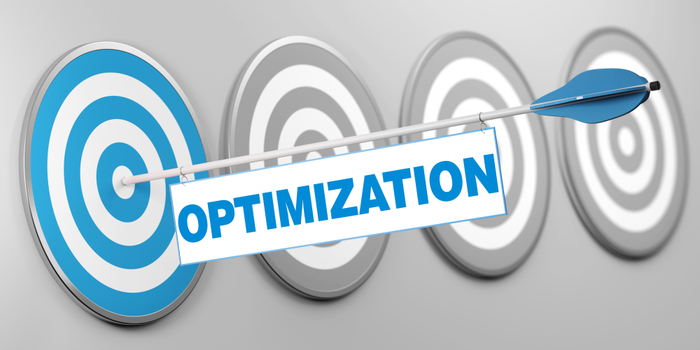Many sales teams aren’t doing all that they can to maximize revenue, even if they think that they are. Sales optimization is a paradigm that seeks to change that. In many leadership models, if the sales teams are reaching their numbers, it’s assumed that little needs to change. Sales optimization, on the other hand, involves constantly reassessing both targets and techniques so that if there is room for improvement, your numbers will improve.
Maximizing Sales Performance
Sales optimization is not a single defined process but a comprehensive mindset. Rather than focusing on one-dimensional targets, sales optimization has your team constantly striving to maximize performance on multiple metrics and timescales. Adopting a sales optimization framework means anticipating weaknesses and implementing new strategies to address them, not on a yearly basis but regularly. At the same time, it means balancing these short-term improvements with a clear focus on long term success. With this outlook, you are proactively seeking to increase performance rather than constantly reacting to downturns after they’ve happened.
If this sounds vague, that’s because the exact methodologies will invariably differ between companies and even individual teams. That’s why it’s so important to begin any sales optimization initiative with honest self-reflection and goal setting.
Defining Sales Optimization for Your Business
It’s impossible to optimize sales if you don’t have a clear picture of what your optimization efforts are meant to achieve—or of what your team is currently achieving. Reflect on your recent performance and critically evaluate where there’s room for improvement. Don’t limit yourself to numbers, either. Perhaps you’re entering a new market or targeting a different type of customer. Whatever it is, defining what success will look like in the short, mid, and long term is a critical first step that will guide the remainder of your efforts.
Pipeline Management
Once you’ve identified where you’re going, you can begin to adopt specific practices that will help your team get there. However, understand that sales optimization cannot work if it relies on one-size-fits-all techniques, even those that are considered common knowledge. For instance, one of the core goals is to improve pipeline management so that sales team are appropriately handling each stage of client acquisition. To do this, you must assess your pipeline at this point in time.
Tracking Sales Optimization Progress
Sales optimization cannot be accomplished in a one-off workshop or memo. Instead, it requires constant effort to monitor progress and readjust as necessary. To do this, you’ll need to rely on a combination of technology, data, and good judgment. Sales Management teams should make accurate data collection, tracking, and analysis a priority, emphasizing the KPIs that are most relevant to your industry. Of particular note are sales KPIs like revenue, penetration, and growth, but other metrics can also be useful in assessing progress:
- Activity Sales Metrics: In combination with performance and productivity metrics, quantified numbers of interactions, conversations, or emails can highlight inefficiencies and help management identify individuals who might need additional training.
- Pipeline Sales Metrics: How long is your sales cycle, and how often are your leads converting? These figures need to be reassessed regularly if you are to maintain the health of your sales pipeline and focus attention where it’s most needed.
- Hiring and Training Metrics: Personnel is as important, if not more important, than sales methodologies. Metrics such as ramp-up time can warn you if your hiring or training processes need extra attention.
Use caution to ensure that the metrics you’re tracking and assessing line up with your ultimate goals. Getting bogged down in data that are irrelevant to your market or team size can obscure legitimate problems with your sales process. In general, it’s best to focus on no more than 20 KPIs, although that’s not to say that you shouldn’t collect other data that might be informative.
Acting on Data: Make a Plan, and Make it Long Term
While smart data collection is a core tenet of sales optimization, data on its own is useless. It’s far more important to develop a plan for assessing and projecting performance based on those data. Remember that in sales optimization, your goal is not only to react to problems but to anticipate potential areas of growth or weakness using data to guide you. It can take some time to shift toward a more predictive model, but proper hiring and training practices can help ensure employees are ready to prioritize long term growth over reactionary course corrections.
Use the Right Tools
To facilitate these decisions, you should invest time into choosing the most appropriate data management sales tools for your team. Ideally, you’ll identify a platform that makes it easy for sales teams to enter and update their own data while also offering robust oversight tools for operations professionals. In addition to a core platform, you might also consider specialized tools like simulators to help clarify what a strategic shift might do for your numbers.
The IMPACT Selling® process can integrate into CRM to enable your sales team to use the principles taught in the classroom on a daily basis. As salespeople move opportunities through the IMPACT stages, sales managers track and coach sales activity against the IMPACT Selling process for improved predictability.
Finally, training materials are an often-overlooked tool that can benefit productivity across departments. An effective training program helps salespeople operate effectively and independently, and it helps managers identify critical trends in a sea of data. If you are to effect lasting change to your sales structure, training is essential to ensure that everyone shares the same vision and is working from the same set of principles.
Optimize Your Process with IMPACT Selling®
At The Brooks Group, we’ve spent decades honing the industry’s best sales training and hiring assessment products designed to maximize revenue. We work with sales professionals to develop personalized optimization solutions to help our clients hire the right people, cultivate their growth, and refine their performance over time. Our proven IMPACT Selling System has helped over 1,000,000 professionals boost performance across hundreds of industries, and we draw on this experience to ensure that each client receives a solution that will most effectively address their unique pain points.
To find out how The Brooks Group can help you adopt a future-orientated sales optimization perspective, get in touch with us today.
Additional Sources Referenced





